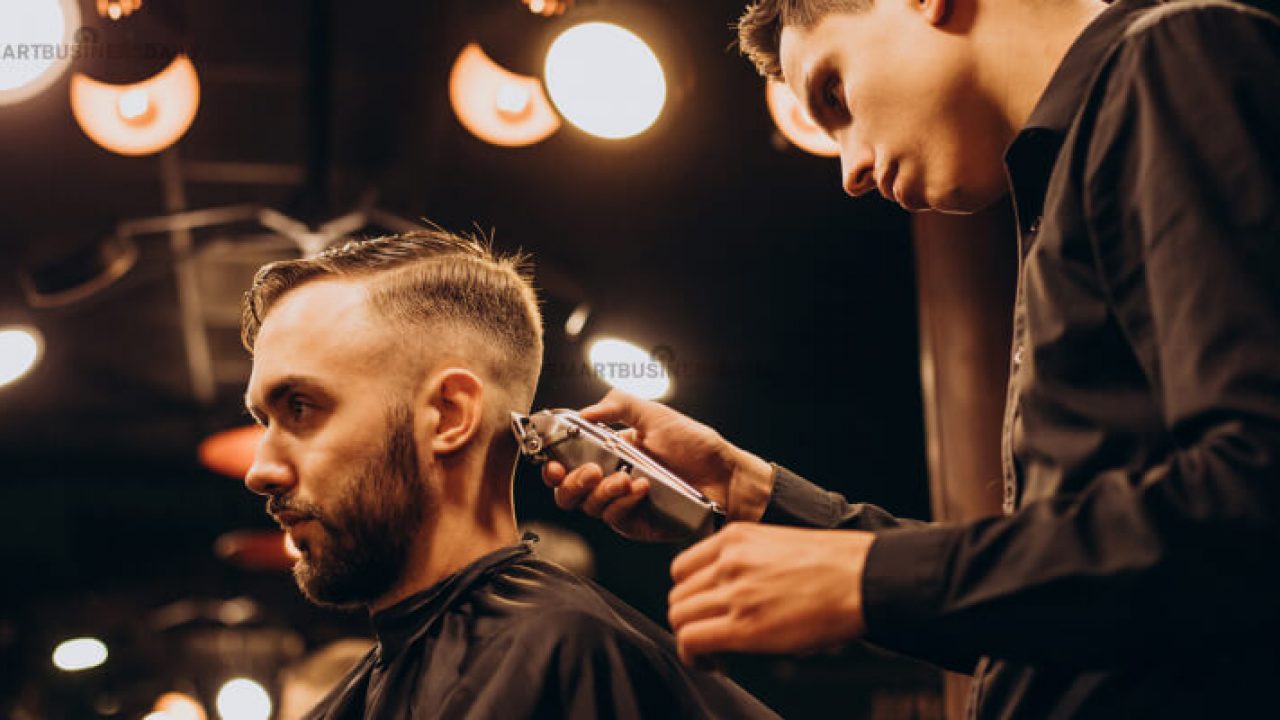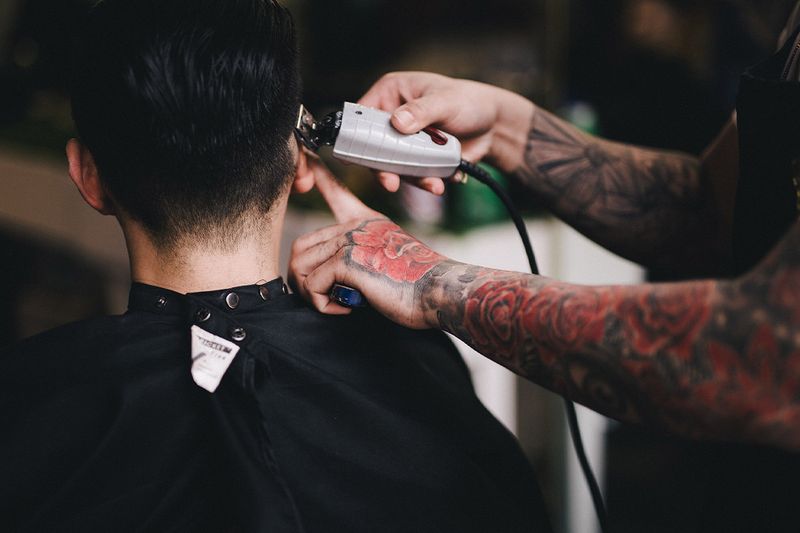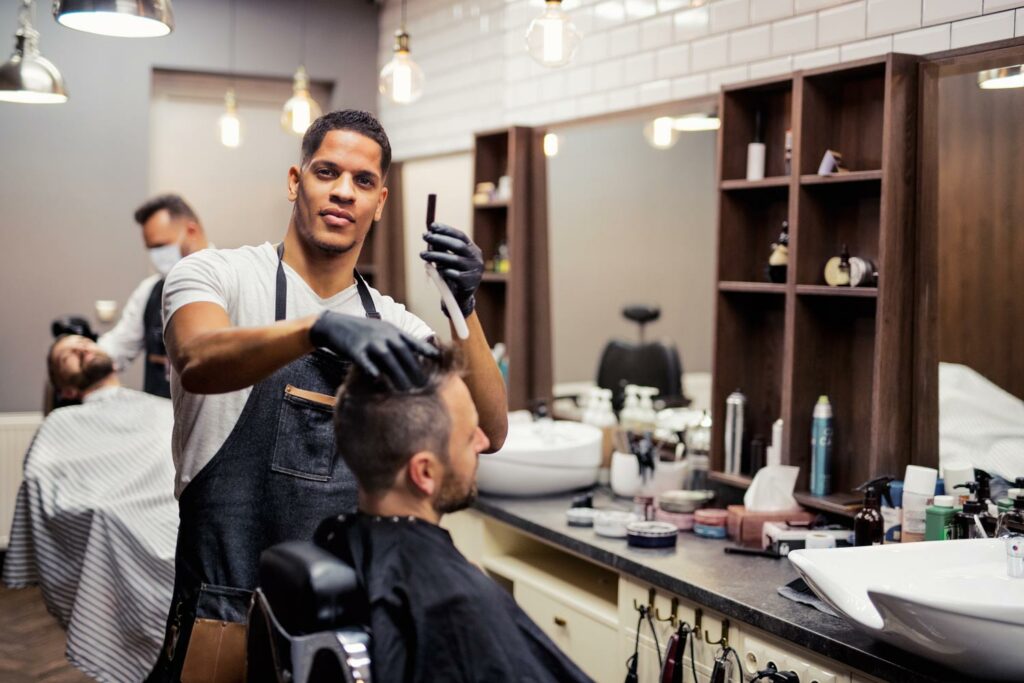How To Become A Barber is a question of many people who want to work in the haircut industry. Barbering can be a very creative and financially rewarding profession. Barbering is a growing industry that has garnered attention as a profession, whether you are a complete novice or a career changer. There are several paths to becoming a barber, but they all have one thing in common: hunger and drive! Whatever path you take, you must prove your determination to succeed to make that happen for you.
Contents
Career as a Barber
Barbershops today are not the sad-looking institutions of our parents’ and grandparents’ days. Today’s barbershops are some of the trendiest tickets in town for men searching for the right haircut, a close shave, and some great conversation. Talented, highly qualified barbers are in high demand at barbershops that feature old-school traditions such as comfy, Italian leather barber chairs as well as classic surroundings (think 1920’s-style speakeasy) or barbershops that feature flat-screen televisions on the walls and clients who enjoy anything from a cigar bar to a glass of wine.
As the barbershop renaissance continues, the requirement for excellent barbers is expected to increase. According to the Bureau of Labor Statistics, barber jobs in the United States will grow by 11% between 2012 and 2022. It’s an excellent time to consider a career in barbering, and there are numerous reasons why this field could be a good fit for both men and women in the coming years.
Salaries for barbers

Barber shops are slowly making a comeback in America, and many attribute this to the fact that they are trying to reinvent their services to attract today’s customers. According to the Small Business Development Center Network, the haircare services industry in the United States includes approximately 86,000 establishments with combined revenue of approximately $20 billion. Approximately 4,000 of these businesses are barbershops.
How To Become A Barber Quickly And Professionally With 3 Steps?
Here are 3 steps to how to become a barber for everyone who wants to become a barber.
First, experience with a Barbering Career
Although there are female barbers, the barbering industry is still dominated by men, as well as the majority of today’s barbers were no doubt inspired to pursue this profession by their sense of style as well as great memories of visiting their regional barbers.
A trip (or 3) to the barbershop is definitely for those keeping in view this career. Observing the clientele, the atmosphere, and the barber’s work is one of the best ways to understand a barber’s day.
A barber is an expert who cuts and styles men’s hair as well as cares for men’s facial skin, hair, and scalps. Barbers are, of course, typically employed in barbershops, though several high-end hotels, as well as spas, now employ full-time barbers to serve traveling businessmen.
Individuals who want to be successful barbers should be open and friendly, and they should enjoy interacting with people and spending the majority of their day engaging in social with the people they serve. Those interested in becoming barbers should expect to be on their feet as well as working with their hands for the majority of the day.
Once a regular clientele is established, barbers normally enjoy flex time, relaxed work conditions, and a steady income.
Obtaining the Required Education and Training

A comprehensive barbering education is typically the first step toward obtaining the state license needed to become a barber. Most state boards of cosmetology as well as barbering require fulfillment of an authorized education program or perhaps an apprenticeship, or both, to obtain state licensure.
The requirements for becoming licensed are generally very similar across all state boards and include:
- Completing a barbering program/apprenticeship
- Obtaining a license
- Examining for a worded and/or practical barber exam
Barbering education, which is typically obtained through a devoted barber school or a larger, all-encompassing school of cosmetology, must meet the required practice hour necessities for state licensure as proven by each state’s board. Applicants for barber licensure in Illinois, for example, must complete a program of at least 1,500 hours, whereas candidates in Pennsylvania must complete a program of only 1,250 hours.
A state-recognized/approved barber school’s curriculum generally includes both theoretical and practical study in areas such as:
- Bacteriology
- Sterilization and sanitation
- stropping and honing
- Shampooing and massaging the scalp
- Razors with straight edges
- Skin and scalp problems
- Hygiene
- Physiology
- Barber rules, laws, and regulations vary by state.
Passing the State Licensing Exam
Candidates for barber licenses in all states must take and pass a state barber exam, which may be a state-designed examination, the national examination administered by the National-Interstate Council of State Boards of Cosmetology, or even a combination of the two.
For most states, the examination process consists of two exams: a written exam that tests a candidate’s understanding of barber theory and a practical exam that tests a candidate’s barbering skills.
The National-Interstate Council of State Boards of Cosmetology written examination for barbering includes the following assessment areas:
- Infection prevention and control
- Scalp and hair
- Histology of the skin
- Light and electricity
- Instruments, implements, and equipment
- Chemistry
- Services for facials and shaving
- Services for hair care
- Services relating to chemicals
The practical the National-Interstate Council of State Boards of Cosmetology barber test may assess candidates in the use of chemicals, depending on state requirements:
- Setup and client safety
- Using a straight razor to shave
- Chemical Waving Haircutting
- Hair coloring/lightening
- Chemical sedation
- Setup and client safety
- Straight razor shaving Haircutting
Candidates for either exam may also be evaluated in the following areas, depending on state requirements:
- Fundamental facial
- Blowing drying
- Curling with heat
Getting into the Profession

Most barbers start their careers as employees in a well-established barbershop. Although salary arrangements vary from barbershop to barbershop, most new barbers start on a commission basis until they start building up a clientele.
The commission process typically entails splitting the proceeds from a haircut with the barbershop. A typical commission split, for example, is 60/40, with 60% going to the barber as well as 40% going to the barbershop.
As barbers gain experience and a loyal clientele, the commission is normally represented by booth rental, which needs the barber to charge the barbershop to “rent” the barber chair. Any money made from the services offered is then kept by the barber.
Finally, many barbers’ ultimate idea is to start opening their barbershops.
The bottom line about How To Become A Barber
An apprenticeship provides only a small supply of haircutting but allows you to learn how a salon operates. An apprenticeship has no monetary cost; only your time as well an opportunity cost. Hope that this article is helpful for you when searching the steps to How To Become A Barber. Let us know if you want to share the journey to How To Become A Barber of yours with everyone in the comment box below.

